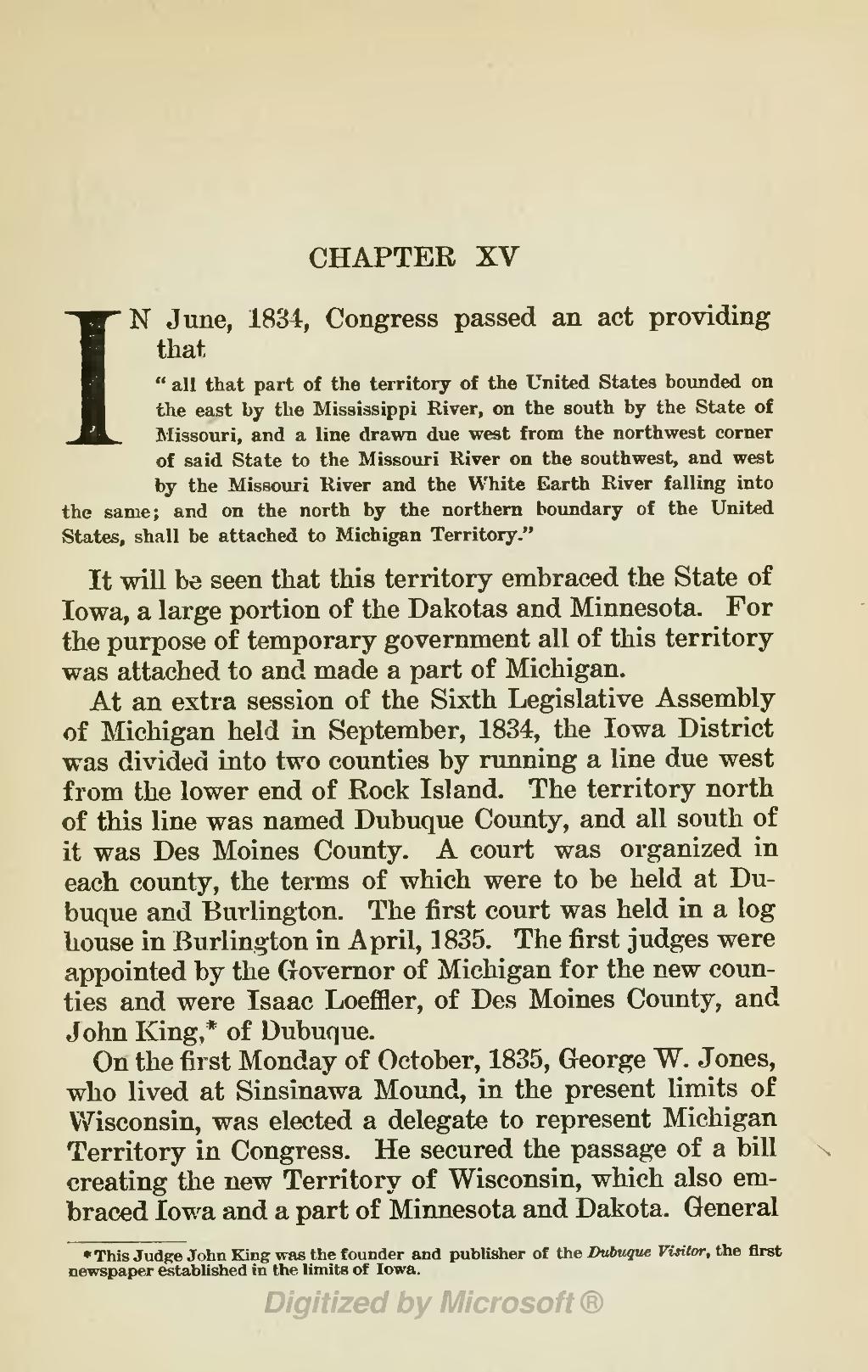CHAPTER XV
IN June, 1834, Congress passed an act providing that
It will be seen that this territory embraced the State of Iowa, a large portion of the Dakotas and Minnesota. For the purpose of temporary government all of this territory was attached to and made a part of Michigan. At an extra session of the Sixth Legislative Assembly of Michigan held in September, 1834, the Iowa District was divided into two counties by running a line due west from the lower end of Rock Island. The territory north of this line was named Dubuque County, and all south of it was Des Moines County. A court was organized in each county, the terms of which were to be held at Dubuque and Burlington. The first court was held in a log house in Burlington in April, 1835. The first judges were appointed by the Governor of Michigan for the new counties and were Isaac Loeffler, of Des Moines County, and John King,* of Dubuque.
On the first Monday of October, 1835, George W. Jones, who lived at Sinsinawa Mound, in the present limits of Wisconsin, was elected a delegate to represent Michigan Territory in Congress. He secured the passage of a bill creating the new Territory of Wisconsin, which also embraced Iowa and a part of Minnesota and Dakota. General
* This Judge John King was the founder and publisher of the Dubuque Visitor, the first newspaper established in the limits of Iowa.
